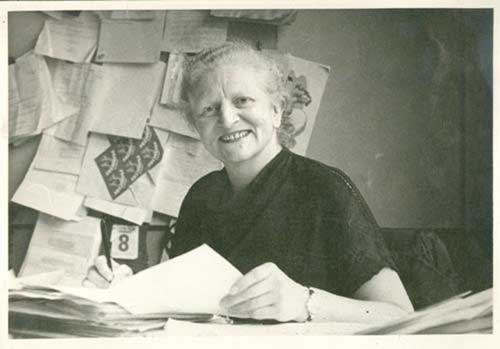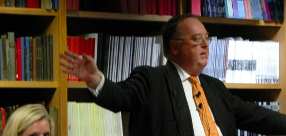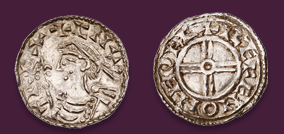
Auction: 6006 - Banknotes of the World
Lot: 866
A unique and secret collection of material produced by the Free French in London during the Second World War. . This unique collection includes printing plates to produce forged German "Camp Money", espionage equipment for use by the French Resistance and a substantial quantity of documents and photographs relating to the clandestine activities of the Free French. Secrets of the French Resistance (in the words of Mrs Dorren Mulot´s great- nephew) Shortly after the occupation of France, in 1940, Charles De Gaulle, then a general in the French army, fled to England and formed an alliance with Winston Churchill. De Gaulle broadcast to the French nation from London "France has lost a battle; she has not lost the war", "Setting France ablaze" this was their plan to counter the germen occupation of war torn France. The French Resistance worked tirelessly and heroically to undermine the efforts of the Nazis to dominate Europe. As the war progressed many people in England also played their part in this enterprise. Among them was a young woman, my Great Aunt, Doreen Mulot who had married a French man shortly before the war. She was a fluent French speaker who had recently returned from France and had a passion and empathy for the struggle that was being played out over the channel. Churchill and De Gaulle set up the Special Operations executive (SOE) which was to oversee and coordinate the efforts of the resistance fighters in the France. My aunt became part of this organisation. Having trained and flown out many operatives into occupied France the SOE worked tirelessly to support these men and women, many of whom gave their lives for the cause. Among these people was, Odette Hallowes, who was captured by the SS and tortured and survived imprisonment in Nazi occupied France. Whilst this atrocious battle for peace continued, and whilst friends and colleagues of my aunt were being tortured and killed, another silent war persisted in secret. Unknown to this day, the resistance was supported by the clandestine activities of men and women working tirelessly to support their friends and comrades. In a bathroom in a Hampstead house two women sat over a bathtub filled with dried prunes. As the prunes swelled up they carefully picked out the stones and filled the cavities with carefully rolled up maps of Europe covered in waxed paper. These prunes were then dried out and sent out in parcels to prisoners of war in occupied territories. The maps detailed the railway lines that criss-crossed across Europe and provided prisoners with the detail that they needed to effectively plan their escape. The French Resistance were provided with the means of disseminating further information that would be difficult to detect by the Germans. Instruction manuals were printed that told the resistance workers how to sabotage German facilities. These booklets, small enough to fit into a handbag or wallet, were especially printed, in England, with covers that masked their actual contents. The covers of these booklets were designed to look as innocent as possible and purported to be diaries, pocket dictionaries, recipe books and health manuals. Accurate forgeries of official German rubber stamps were produced so that documents could appear to be authenticated. Hand held rollers were produced that could be used to secretly paint Free French slogans on walls with no one noticing. Perhaps the most elaborate enterprise was the forgery of "Camp Money". In PoW camps, captured officers were paid an equivalent of their pay in "Lagergeld" an internal camp currency with which they could buy a limited range of goods which Germans made available to them The Germans printed these notes especially for the use of Prisoners of War in occupied territories. This "camp money" had no value outside of these restrictive environments and were, therefore of no use if prisoners escaped. However they allowed prisoners to purchase items in the camps that they would not otherwise been able to buy. The exiled French, had printing plates made so that they could produce exact forgeries of these notes to send across to prisoners concealed in parcels or secretly passed into the camps. Like the other subversive material in my aunts collection the very existence of these items ahs remained a secret to this day. Inventory 1. The archive consists of printing blocks for ´Kriegsgefangenen Lagergeld´ (prison of war money), 1-, 5- and 10 Reichsmark, examples of counterfeits of 10 Reichspfennig 1- (6) and 5- Reichsmark (4), as well as: 2. an English ashtray with the Croix de Lorraine (enamel on white metal) 3. two brooches titled "France libre" on a croix de Lorraine (enamel on yellow metal 4. a rubber stamp with the "Deutsches Reich" Nazi eagle 5. a printing plate showing the Fuehrer speaking 6. a printing plate of a map of the train-lines (?) in Italy and North Africa and a series of items of bibliophilic interest: 7. photographic reproductions of diverse books: Chroniques interdites (Editions de Minuit [1943]), two copies of Forez´s Le Cahier noir (Edition de Minuit 1943), Thimerais´s La Pensée patiente (Edition de Minuit 1943), Laurent Daniel´s Les amants d´Avignon (Paris 1943), and Bela Zara´s illustrated Je dis pour toi - manières la brousse (?), the use of which is unclear, with a document ordering 4 copies of some of these 8. 17 propaganda miniature (57x79mm) booklets to workers on how to-, and why, sabotage industrial factories. Probably all given by the "Parti Socialiste Clandestin" (as stamped in one volume), they are hidden under fake covers: Petite anthologie des poètes français (x1), Affection des yeux - Comment conserver votre vue? (x1), Conseil pratiques: l´art d´accomoder les restes (x1), Almanach 1944 (x1), Je sais cuisiner (x1), La legislation sur les dommages de guerre (x1), Les enterprises modèles de l´Allemagne - La force économique du Reich (x11). With another, larger, booklet of "Le Complot Laval-Pétain" under a Garnier Paul et Virginie cover. 9. Some periodicals: Les Cahiers politiques (# 3 and 4, August & November 1943), La Revue libre (# 1 and 2, Dec. 1943 and Feb. 1944), Les Cahiers de Libération (# 1 and 2, Sep. & Dec. 1943) 10.Several booklets: Maréchal vous voila (x8), Le General De Gaulle (x6), Le Problème de l´Alsace et de la Lorraine (x4), Les Jours heureux par le C.N.R. (x5), Pétain et la cinquième colonne (x 2), Général De Gaulle´s Discours 1940-1944 (x2), and others (16) 11. the original manuscript for a 1944 propaganda French Almanac, with the printed Almanac but also a wide range of archive material as such as: - every day work document from the London representative of the French Interior Ministerium- photographs showing some of the horrors of WW2 (cut from newspapers?)- a few personal photographs- prunes 12. and a very interesting box containing: 13. the typescript, written in English, by Sous-Lieutenant Bailhou, titled in French "Combattre avec de Gaulle", first part only. Seems to be mostly memories of a soldier and prisoner. 14. many pasted documents, and manuscript notes, probably the basis for an exhibition or more likely the first draft of an unpublished book, narrating the war Estimate £ 800-1,200
Sold for
£2,700




